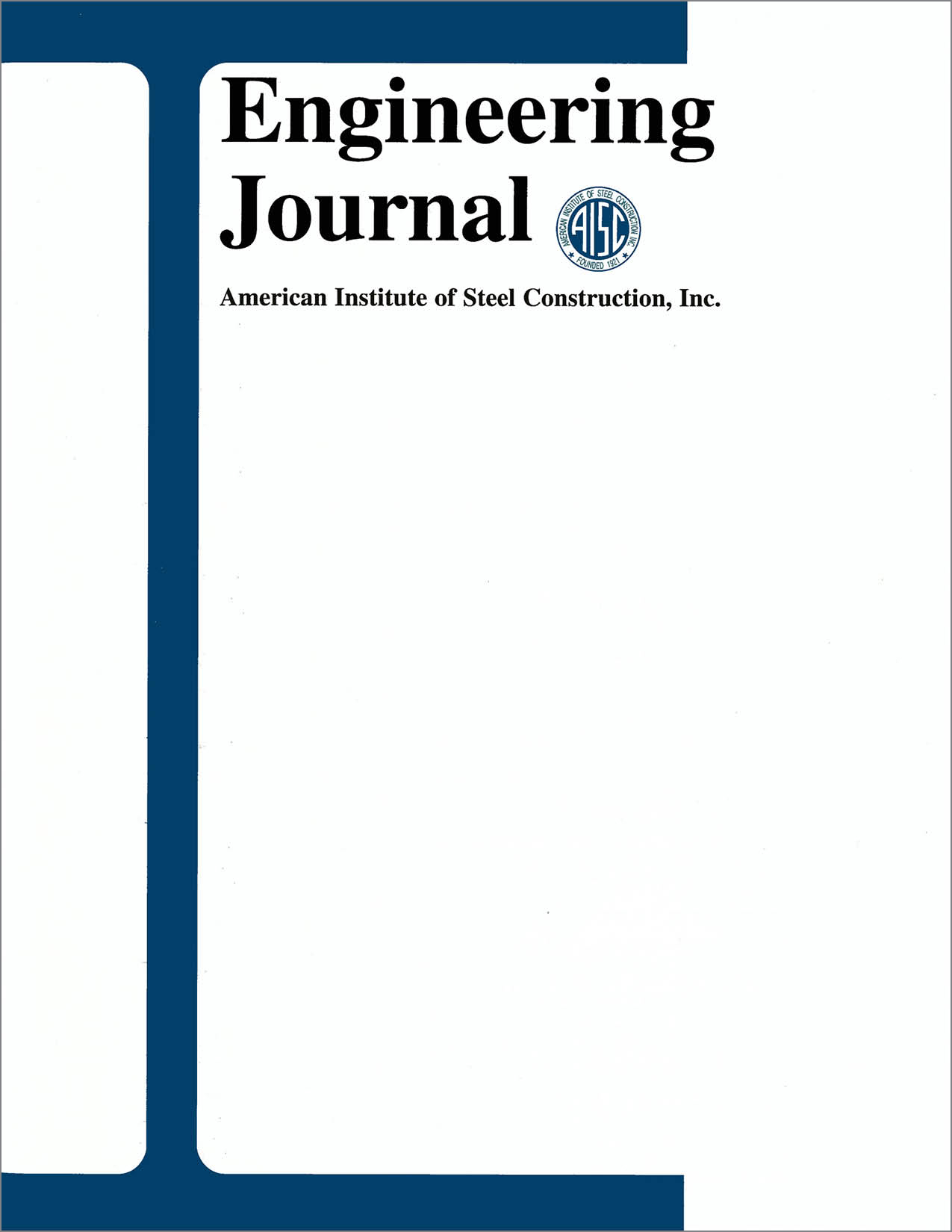Behavior of Transverse Fillet Welds: Experimental Program
DOI:
https://doi.org/10.62913/engj.v41i2.828Abstract
The main objective of the research presented in this paper is to expand the body of experimental results on transverse fillet welds to include the flux cored arc welding (FCAW) process and to confirm the applicability of the current provisions of the Canadian Standard, CSA—S16—01, and Appendix J2.4 of the AISC specification to a broader range of electrode types and other conditions. In particular, the selected filler metals were to possess varying levels of material toughness. The effects of wire manufacturer, steel fabricator, weld size and number of passes, root notch orientation, and ambient temperature were also investigated. A review of the literature is presented in order to obtain a better understanding of the basis for the current design equation and its limitations. A description of the comprehensive test program recently conducted at the University of Alberta to investigate the strength and behavior of transverse fillet welds is then presented. A companion paper, also published in this issue of the Engineering Journal, presents parametric and reliability analyses of the test results to evaluate the level of safety being provided by the current design equation.

